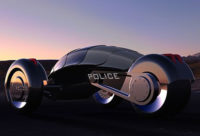Mid IR Sensors: Market Shares, Strategies, and Forecasts to 2019
DUBLIN, IRELAND — Next generation Mid IR Sensors are leveraging new technology. Worldwide mid IR sensor markets are poised to achieve significant growth as demand for sensors.
Mid IR sensors can measure chemical composition of materials and gas. The efficiency is unmatched by any other technology, cost is increasingly competitive. Mid IR is extending use beyond military applications to commercial systems, including the Internet of things where sensors become part of network systems. Mid-IR QCL systems have achieved price performance levels that are increasingly attractive. Vendors bring sensing capabilities to a broad range of applications, including: spectroscopic and bio-medical imaging; materials characterization; standoff explosive detection; microscopy; and non-destructive testing. Spectroscopy and imaging measurements are easier, faster and more cost-effective leveraging advances in Mid IR sensing
Quantum Cascade Laser (QCL) technology is very promising. Mid-infrared sensors and imaging applications depend on quantum cascade laser (QCL) technology. Daylight Solutions quantum cascade laser (QCL) technology has been delivered to more systems for more customers in more applications than all other QCL-based solutions combined. Advances in QC laser technology and spectrometer hardware are combined with spectroscopic techniques. Intra pulse spectroscopy and similar techniques provide a major step change in sensitivity, speed of operation, fingerprinting capability, size and cost. They offer a major improvement on methods of gas detection. Recent advances in spectrometer hardware relate to QC gas sensors.
Advances exploit recent technological advances including miniaturized integrated electronic systems, plug and play interfaces and micro optics. These will progressively replace unwieldy, fragile and expensive instrumentation. The lasing wavelength for QCL's is determined by the choice of semiconductor material. By adjusting the physical thickness of the semiconductor layers new functionality is achieved. This removes the material barriers associated with conventional semiconductor laser technology.
An infrared spectroscopic laser source has no need for cryogenic cooling, provides high output powers, has large spectral coverage, provides excellent spectral quality, and has good tunability. Homeland security, military communications, infrared countermeasures, chemical warfare agent detection, explosives detection, medical diagnostics, imaging and industrial process controls, fire detection and remote gas leak detection, pollution monitoring, and real-time combustion controls are uses for the mid IR sensors.
Looking for a reprint of this article?
From high-res PDFs to custom plaques, order your copy today!




